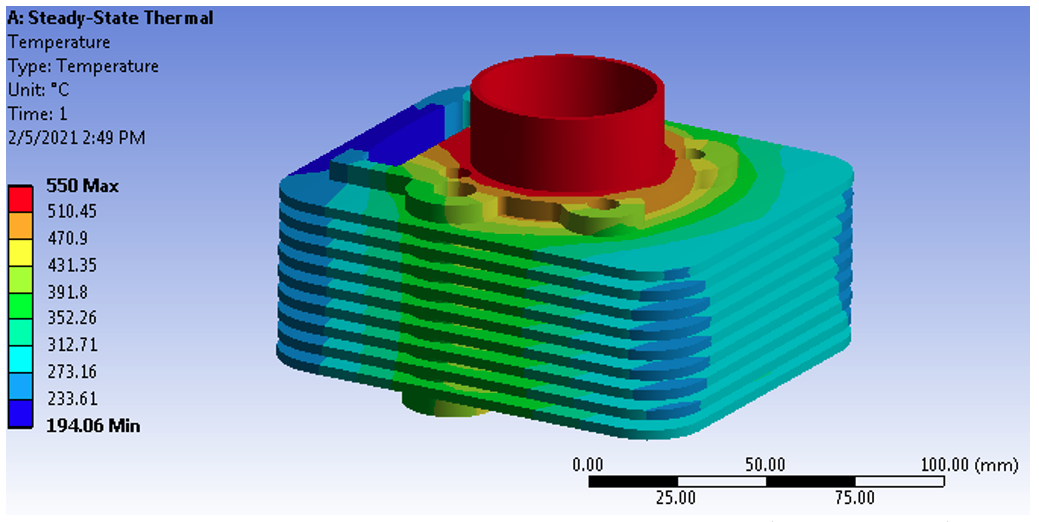VOLUME 17 (Supplement)

SciEnggJ 17 (Supplement) 001-007
available online: February 12, 2024
DOI: https://doi.org/10.54645/202417SupTLF-32
*Corresponding author
Email Address: ejkiran@gmail.com
Date received: March 18, 2023
Date revised: December 30, 2023
Date accepted: January 4, 2024
ARTICLE
Performance analysis of single cylinder engines with enhanced heat dissipation fins using computational fluid dynamics
Science and Technology, Hyderabad, Telangana, India-501301
Engine cooling plays a major role in engine performance. The expanded surfaces that aids to dissipate the engine’s heat are called fins, but their length is limited, which constrains the heat dissipation rate. The automotive industry as a whole works to increase the rate of heat dissipation so that engine efficiency may be increased. Current work aims to increase heat dissipation rate through these extended surfaces by varying the shape of the fins. Here, four different fins are considered, namely circular fins, rectangular fins, aerodynamic fins and curved fins for the analysis. Firstly, finite volume method (FVM) analysis was carried to obtain convective heat transfer coefficient “h” value for each fin shape in FLUENT software. These “h” values are imported for FEA thermal analysis and the result of temperature distribution across the engine cylinder fins and heat flux values at three different vehicle speeds are examined. The heat dissipation rates were observed low for circular fins at all speeds.
© 2025 SciEnggJ
Philippine-American Academy of Science and Engineering